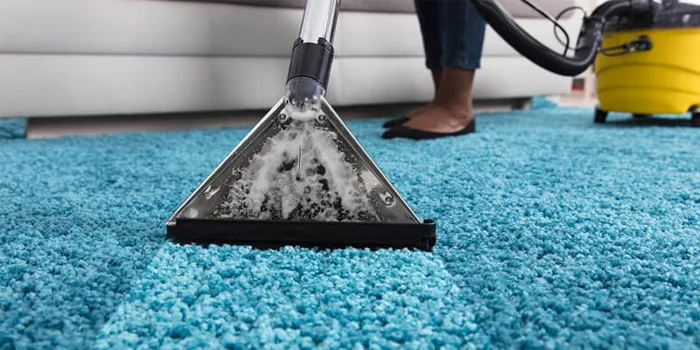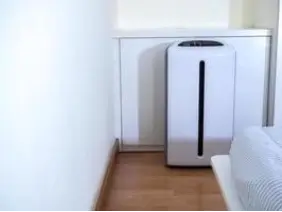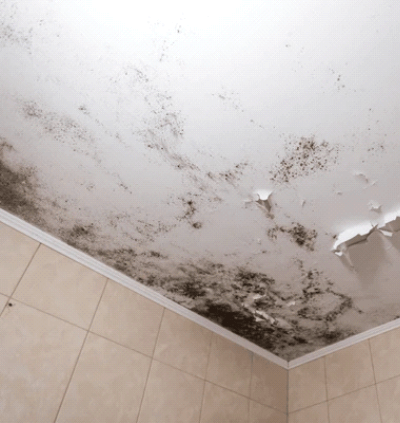Mold on wood is very common because wood absorbs moisture and retains it for a long time. Due to its porous surface, mold penetrates deep inside wood. That’s why it’s important to keep wooden surfaces away from water sources.
In cases of severe mold growth on wood, contact mold removal services. Your DIY mold killers will not help at this point. However, if you spot mold on wood early, you can still take a few steps to protect your beautiful wooden furniture and structures.
Be careful when dealing with mold. It spreads rapidly and contaminates the surrounding areas. Health issues are very common with all fungus and mildew infestations.
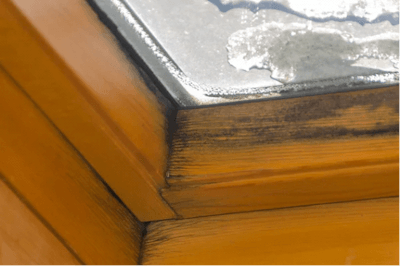
Key Takeaways
- Mold can grow on wood surfaces like wooden floors, rafters, furniture, cabinets, and window panels due to wood's ability to absorb and retain moisture.
- Signs of mold on wood include discoloration, black spots, a damp musty odor, and fuzzy growth appearing in various colors.
- Causes of mold on wood include high humidity, water leaks, poor drainage, and flood damage.
- To kill mold on wood, vacuum the affected area, clean the surface, apply a mold-killing spray or homemade cleaner like borax or vinegar solutions, remove stains, and sand rough areas.
- Mold removal services should be contacted for severe mold infestations or mold that has penetrated deep inside the wood.
Identifying Mold on Wood
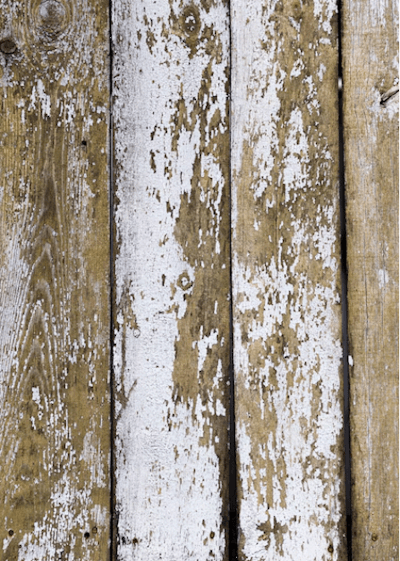
Mold can grow on all organic surfaces if it has the right amount of moisture, warmth, and oxygen levels. Wood is often a common victim because of its moisture absorption and retention.
Check all wooden surfaces in your house. These include the following:
Mold on Wooden Floors
Vinyl Plank floors are very common these days. They look like wood but they’re not prone to mold growth because of top varnish layers. For wooden floors, the risk is very high.
Over some time, high humidity in the atmosphere can lead to moisture buildup within your wooden floors. As a result, your floors start warping, cupping, and buckling. You need to replace them.
Mold on Rafters
Wood rafters in your roof or attic can also absorb moisture from the air. If there’s a leak anywhere, it will also contribute to mold growth. If you see any spots or discoloration, it’s mold. It will gradually decay and rot the rafters, posing a risk to the structural integrity of your home.
Mold on Wooden Furniture
Although wooden furniture is varnished, wear and tear is inevitable over the period. Broken varnish will expose the wood to dust and moisture. This will cause mold to grow inside the wood. Routinely inspect and refresh your furniture. If mold grows, you need to kill it before it spreads. If you can, expose the furniture to sunlight for a few hours.
Mold on Wooden Cabinets
Wooden shelves inside cabinets and wooden doors pose a great risk of mold growth. Your kitchen, bathroom, and laundry cabinets are especially at risk of being exposed to high moisture. Mold on these wooden surfaces is very common and often reappears if not treated and prevented properly.
Mold on Windows
Window panels and sills made of wood are often exposed to rainwater and condensation. They easily attract mildew and fungus. They’re often ignored and cause health issues such as coughing, skin irritation, nose infections, and breathing problems.
Causes of Mold on Wood
Although high humidity and warmth are the major causes, you should also look for other water damage sources that are adding to the problem. Water leaks, water accumulation, burst pipes, poor drainage, flood damage, and mold inside walls and crawl spaces are common causes of Mold growth on wooden surfaces. Eradicate these causes to prevent mold from growing in your living spaces.
Before you learn how to kill mold on wood, you need to identify the causes of mold. If you don’t, it will come back again and cause more inconvenience for you.
Signs of Mold on Wood
Wood that’s visible to you is easily detected. However, the hidden wooden material such as drywall, wooden structure in crawl space, and rafters, show signs of mold at a later stage. For those places, do routine mold inspection.
For wooden furniture, cabinets, window panels and sills, and floors, you should look for following signs:
Discoloration and Black Spots
You might see tiny dots on your wood. This is discoloration and becomes more obvious in
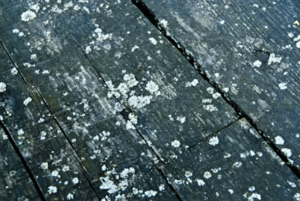
bigger patches. This is a sign that there’s mold or mildew on your wooden furniture. Black spots are a sign of black mold on wood.
Damp Odor
If your house smells like a damp cloth that’s been sitting in the laundry for too long, it’s the mold. This mold can be on any wooden surface, furniture, structure, cabinets, doors, etc. The musty smell will not leave your house until you kill the mold.
Fuzzy Growth
The fuzzy substance on wood is mold. It can appear in green, yellow, white, and green colors. The fuzzy appearance means the growth is way too much. It’s actually the spores that keep spreading in your house.
How to Kill Mold on Wood
There are many complications in dealing with mold. To kill mold on wood, you need to first locate all sources and causes. After proper inspection, you need to assess the degree of damage. If the damage is severe, you need to call Mold Removal Services. However, light damage can be fixed at home.
Nevertheless, make sure you’re wearing protective gear even if the damage is light. Otherwise, you will get an allergic reaction and spread it further. Below are the steps to kill mold on wood:
Vacuum the Affected Wood
Damaged wood with visible mold growth needs to be vacuumed before you start scrubbing it. This will lower the risk of spores spreading everywhere. Use a vacuum with high speed and high suction power.
Clean the Wood
Clean the wood surface with a clean cloth and wipe away any residue to spores. If there are any corners, curves, and bends, clean them using a cotton swab. On the painted surface, wipe off the mold, and on untreated wood, use a sponge.
Apply a Mold Killing Spray
You can use a store-bought mold-killing solution and apply it to the affected area. Read the instructions on the packaging and follow them. In case you want to use a homemade cleaner, you can try the following:
Borax
Mix liquid or powder borax with water and apply to the affected wood. Leave it on to dry.
Vinegar
Dilute water with 50% water and apply it to the wooden surface. This will kill mold in a few hours. Do not wipe or clean until dry.
Hydrogen Peroxide
Dilute hydrogen peroxide with water and rub it on the affected pieces. It is good for killing mold and removing the stains.
Remove the Stains
Once the solution has dried completely, you can move on to the next stage. At this point, you can use a stain remover. Pool chlorine and bleach are excellent stain removers. You can soak a cloth in stain remover and rub it onto the surface. Once the stains are gone, you’re good to go.
Use Sandpaper on Rough Wood
If the wood surface is rough or the stains are too stubborn, you need to sand it down. Take a sandpaper and gently rub it on the wood. Don’t sand down too much or else you’ll damage the wood.
When to Call 24/7 Service Pros?
Dealing with mold can be very dangerous for your health. Mold in wood is very hard to kill because it penetrates deeper. You might be able to kill it from the surface, but not on the inside.
24/7 Service Pros have expert teams dealing with mold on wood. With the right equipment and proper techniques, we can eradicate and prevent this issue.
Which Areas We Serve in South Florida?
- Hollywood
- Davie
- Miami Beach
- Weston
- Hallandale Beach
- North Miami Beach
- Sunrise
- Tamarac
- Coconut Creek
- Fort Lauderdale
- Miami
- Boca Raton
- Hialeah
- Margate
- Pembrock Pines
- Dania Beach
- Lauderhill
- Delray Beach
- Pompano Beach
- Deerfield Beach
- Coral Springs
- Plantation
- Doral
- Aventura
- Miramar
- Sunny Isles Beach

